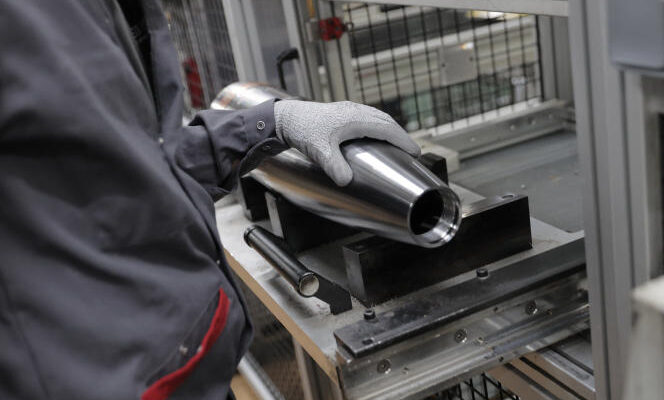Slowly, the robotic arm picks up the steel blank to place it on a cradle. In a few minutes, the cone is machined and takes its shell shape. Once filled with explosive, the 155 mm caliber projectile will be able, despite its fifty kilos, to withstand a speed of 900 meters per second and to turn on itself at 10,000 revolutions per minute, a guarantee of its stability. in flight. “These are the shells fired by the Caesar guns. They have an accuracy of half a football pitch from 40 kilometers away”assures Hervé Le Breton, director of the Nexter Arrowtech factory in La Chapelle-Saint-Ursin (Cher), a 222-hectare site where some 440 employees manufacture the French industrialist’s ammunition.
Considered as mere “consumables” since the end of the Cold War, large-caliber shells, used for artillery fire, have become a sought-after commodity since the start of the war in Ukraine. According to classified Pentagon documents, released to the general public in early April, troops in Kyiv have consumed more than 952,000 155mm projectiles in a year of clashes. And the country’s defense minister, Oleksii Reznikov, estimates that he would need 250,000 more each month to hope to beat the Russians. Dantesque figures, which put to the torture the Western arsenals, already reduced to a bare minimum by years of expeditionary conflicts.
To replenish the stocks of their armies – and continue to support Ukraine – the Western countries have all taken out their checkbooks. Last July, France urgently ordered 5,000 155 mm shells from Nexter, a first in ten years! A second order for 16,000 projectiles was placed in March. And others should follow within the framework of the military programming law 2024-2030, which must be adopted by the summer in parliament. Even more ambitious, the European Union unveiled in March a plan to supply one million shells (from 105 to 155 mm) to Ukraine, taken from national stocks but also acquired from the eleven European manufacturers in the sector identified by Brussels.
Shortage of powders and labor
In fact, all industrialists are tearing their hair out and wondering how to meet the objectives assigned to them, as there are so many obstacles. Since the beginning of the war in Ukraine, the sector has thus been confronted with a shortage of powders intended to propel the shells out of the barrel. “Today there are very strong tensions on this material, everyone wants it, the lead times are important”, recognizes Frantz Caillau, deputy general manager of the ammunition subsidiary of Nexter. France, which no longer produces powder for propellant charges since the closure of the National Society of Powders and Explosives in 2004, has planned to relocate part of it to France, but it will not be before 2025.
You have 49.1% of this article left to read. The following is for subscribers only.
